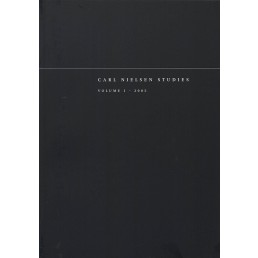Carl Nielsen Unmasked. Art and Popular Musical Styles in Maskarade
DOI:
https://doi.org/10.7146/cns.v1i0.27726Abstract
Although Carl Nielsen’s international reputation rests on his symphonies, in Denmark he is equally beloved for his songs. Over the course of his life, the former increased in complexity as the latter grew more folk-like, so that Nielsen developed into a Janus-faced composer, a master of both art and popular styles. These genres typically have been studied in isolation so that, though many scholars note that Nielsen’s music is full of contrast, few show that this depends on the opposition of two specific styles. Nor has a parallel been drawn between this musical tension and the conflicts Nielsen faced in his personal life, not the least of which was the insidious Law of Jante (“Thou shalt not believe thou art something”) that has plagued many a nationalist artist. Nowhere is Nielsen’s opposition of art and popular styles more effective than in Maskarade (1904-1906), arguably the Danes’s favorite among his compositions, in which the two styles represent conflicting dramatic themes and serve to distinguish between the characters. Ludvig Holberg’s eighteenth-century comedy provided Nielsen with a particularly apt and surprisingly current dramatic framework in which to play out the musical and personal tensions he experienced midway through his career. Nielsen’s opera is an interdependent literary-musical statement in which he underscored the dramatic themes and characterized the main roles with appropriate musical styles drawn from the entire range of his compositional personae. The masked ball’s utopian blurring of class distinctions is modeled musically in the symmetrical key scheme that fuses this musico-dramatic continuum.Downloads
Published
2003-04-10
How to Cite
Reynolds, A.-M. (2003). Carl Nielsen Unmasked. Art and Popular Musical Styles in Maskarade. Carl Nielsen Studies, 1. https://doi.org/10.7146/cns.v1i0.27726
Issue
Section
Articles
License
- Authors retain copyright and grant the journal right of first publication with the work simultaneously licensed under a Creative Commons Attribution License that allows others to share the work with an acknowledgement of the work's authorship and initial publication in this journal.
- Authors are able to enter into separate, additional contractual arrangements for the non-exclusive distribution of the journal's published version of the work (e.g., post it to an institutional repository or publish it in a book), with an acknowledgement of its initial publication in this journal.

